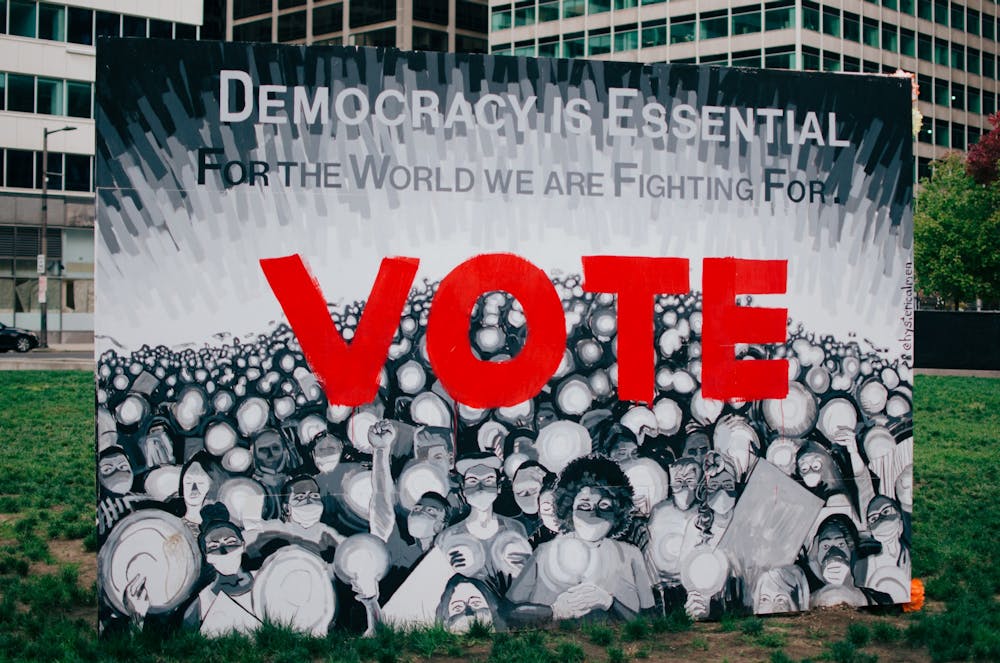Before the 2020 election, an impenetrable cloud of apprehension was cast over the Penn community, Philadelphia, and the nation at large. The diametrically opposed beliefs of rival candidates and members of their respective parties felt oppressive and irrevocable. However, as information becomes publicized regarding contemporary election issues like immigration law, gun control, police brutality, equitable women’s rights, and global climate change, citizens nationwide are ready for to someone to amend the flaws of the current administration. One pivotal way in which the voice of the nation has manifested itself in regards to the 2020 election is through the trailblazing influence of protest art.
Protest art is largely defined as inspired expressions of activism utilized to persuade mass audiences to adopt newly informed perspectives. With roots dating back to the 1960s, visual portrayals of resistance have long communicated and spread a unified message, further championing change to the public. Due to the contemporary election and the weight of its outcome, protest art has expanded greatly as artists, creators, and activists alike champion a more equitable and democratic future.
The Penn community and surrounding Philadelphia neighborhoods have taken action through the aforementioned classification of art. Philadelphia based artist Maria Möller and her exhibition “VOTE: A Window Exhibition in South Philly” encourages local residents to get out and vote. The “To The Polls” murals located throughout the city also scream a forceful message that each vote matters in this election. The visual reverbance of this artwork is indestructible and has helped, albeit indirectly, spark a rise in voter turnout among the local community.
Throughout the Trump administration, the popularity of protest art proliferated. One national art campaign entitled “Enough of Trump" took strides to encourage and inspire voters in 2020. The two main objectives of the campaign were to galvanize a change in federal administration and to target swing states by delivering powerful artistic messages nationwide. This catalytic campaign works alongside greater projects like the 50 State Initiative, a billboard campaign created by Hank Willis Thomas and Eric Gottesman. They publicized protest art around the nation with strategic timing surrounding the election. The billboards are meant to be informative but nonpartisan, urgent but optimistic.
Protest art is also seen allusively throughout nationwide marches and protest movements advocating for legislative change to improve human rights. The Black Lives Matter movement saw incredible artistic expositions: murals, graffiti, paintings, and symbolic signs. Again, during the women’s and LGBTQ+ marches, artists fortified the necessity for change through artistic displays of fashion, posters, and other artistic platforms. These palpable presentations of frustration in the current political and social climate were engraved across national headlines—think #BlackLivesMatter, Count Every Vote, and It's on Us. Protest art is effective, economical, and empowering.
The influence of art has established and continues to forge historical, contemporary, and future footprints in the national presence of fundamental human rights and in the importance of voting for leaders who champion these respective liberties. It's equally important to look at the application of artistic measures and the authority of protests on implementing profound change in the world. Penn Provost Wendell Pritchett informed the community of the power of protesting against modern injustices to achieve political change in the systemic racism, sexism, and overall bigotry of the current administration. In the end, whether it's art, diction, music, fashion, or simply conversation, speaking up in honor of truth and equitability is the catalyst for expansive change.







